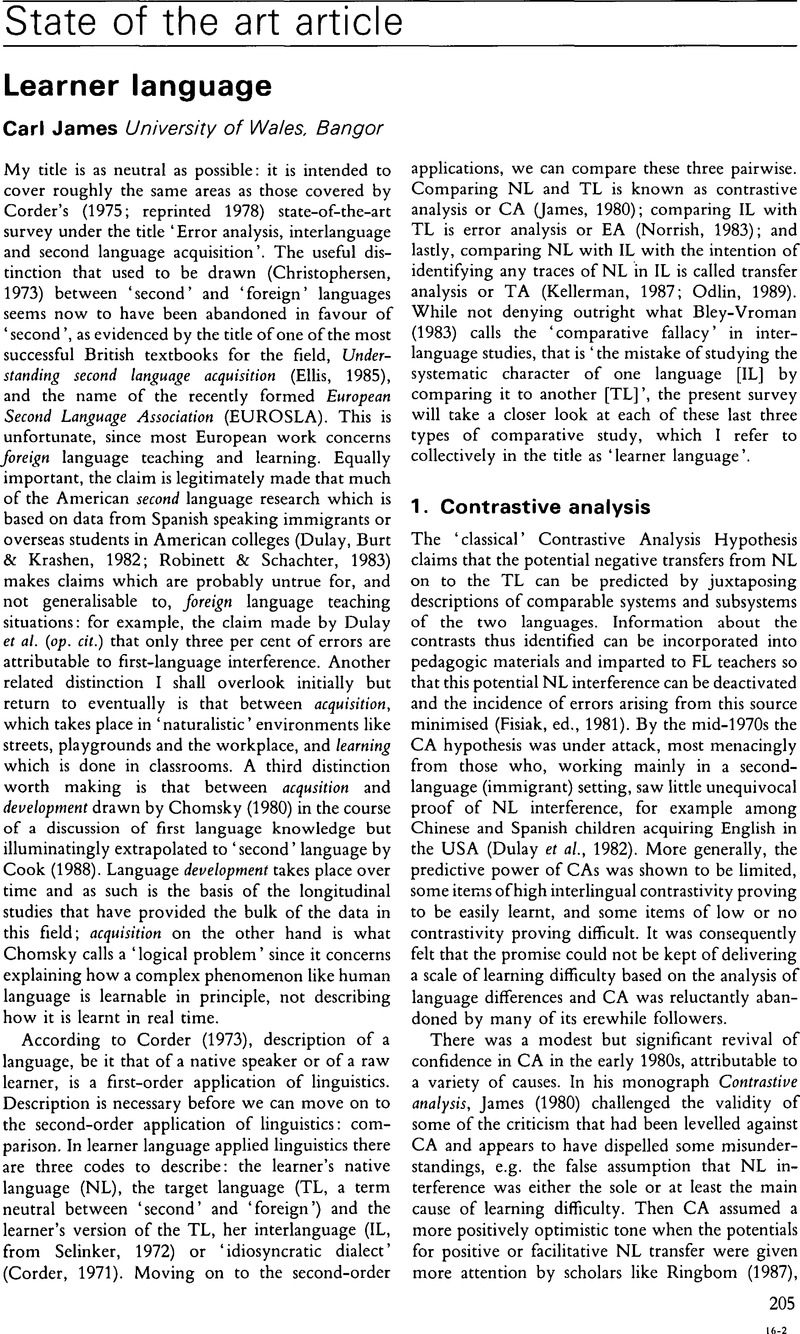Crossref Citations
This article has been cited by the following publications. This list is generated based on data provided by Crossref.
Garrett, Nina
1991.
CARLA comes to CALL.
Computer Assisted Language Learning,
Vol. 4,
Issue. 1,
p.
41.
Jaszczolt, Katarzyna
1995.
Typology of contrastive studies: specialisation, progress and applications.
Language Teaching,
Vol. 28,
Issue. 1,
p.
1.
Jaszczolt, Katarzyna M.
1995.
Handbook of Pragmatics.
p.
561.
Evans, Karin U.H.
1998.
Organizational patterns of American and German texts for business and economics: A contrastive study.
Journal of Pragmatics,
Vol. 29,
Issue. 6,
p.
681.
Fischer, Fiorenza
and
Lavric, Eva
2003.
Real and pseudo-divergent learning structures: On some pitfalls in French and Italian business language for German learners.
IRAL - International Review of Applied Linguistics in Language Teaching,
Vol. 41,
Issue. 1,
CHAN, ALICE Y. W.
2010.
Toward a Taxonomy of Written Errors: Investigation Into the Written Errors of Hong Kong Cantonese ESL Learners.
TESOL Quarterly,
Vol. 44,
Issue. 2,
p.
295.
Jaszczolt, Katarzyna M.
2022.
Handbook of Pragmatics.
p.
1499.





